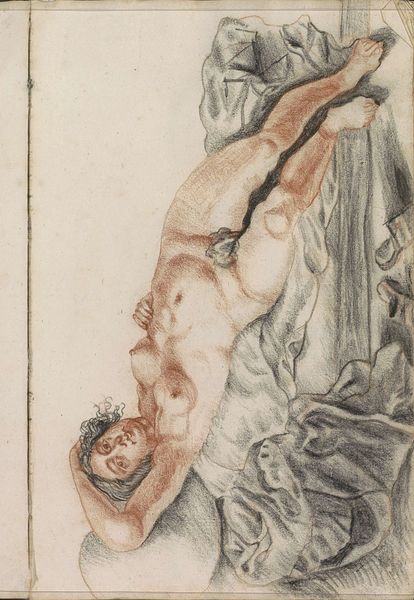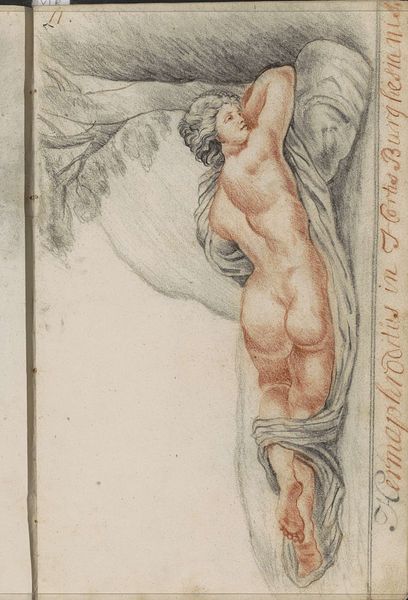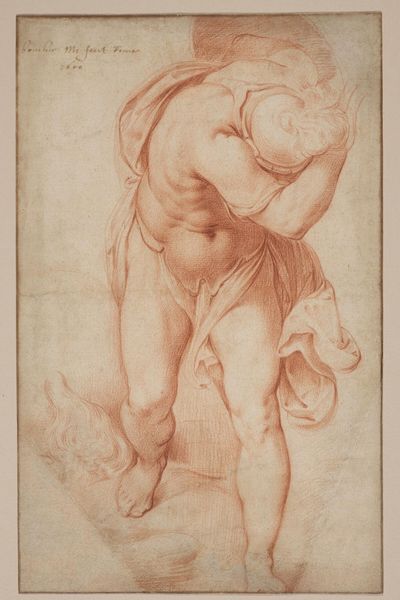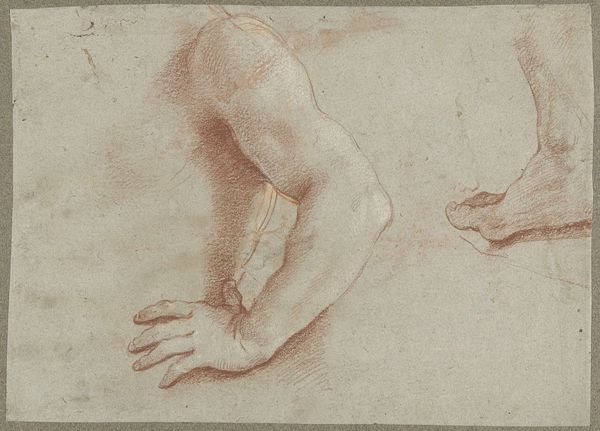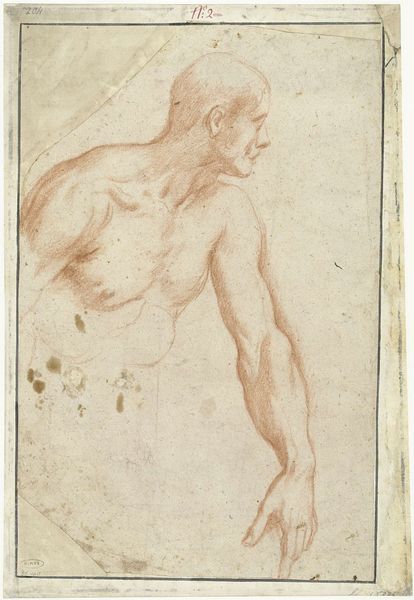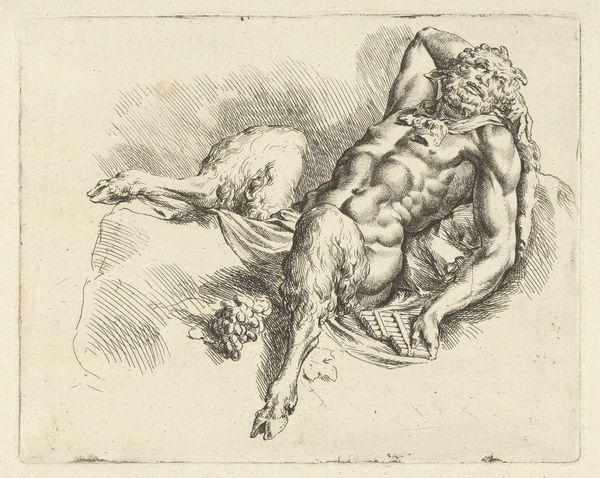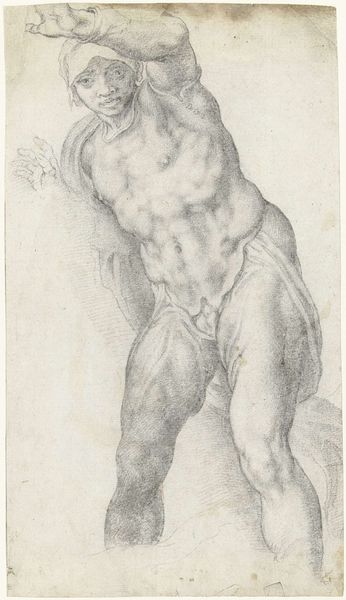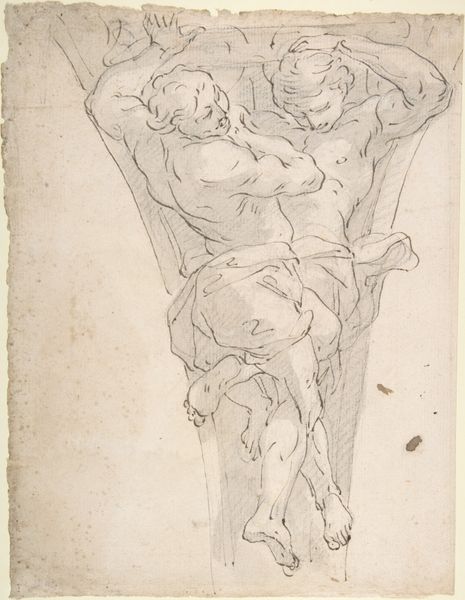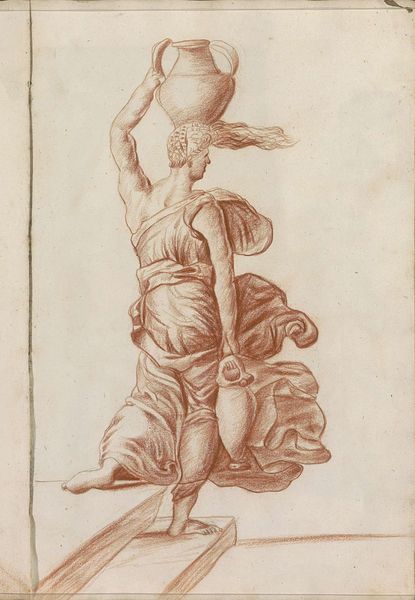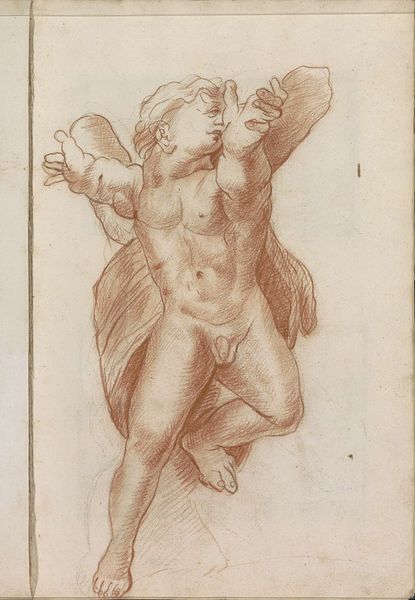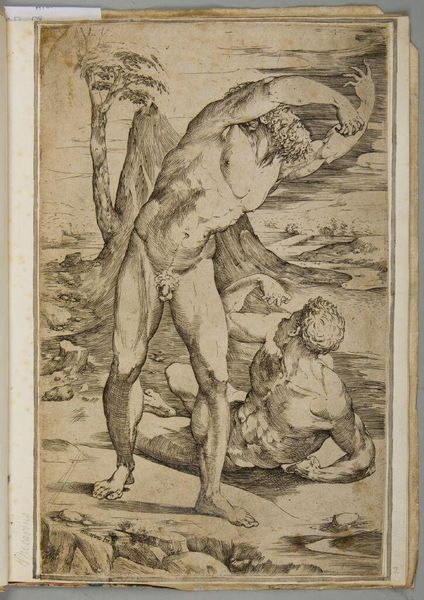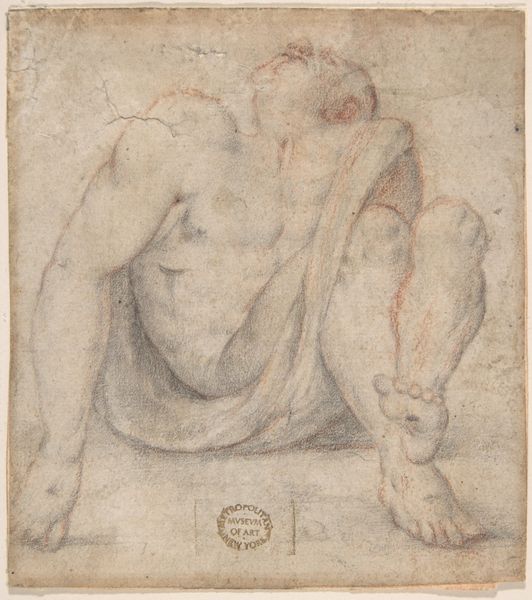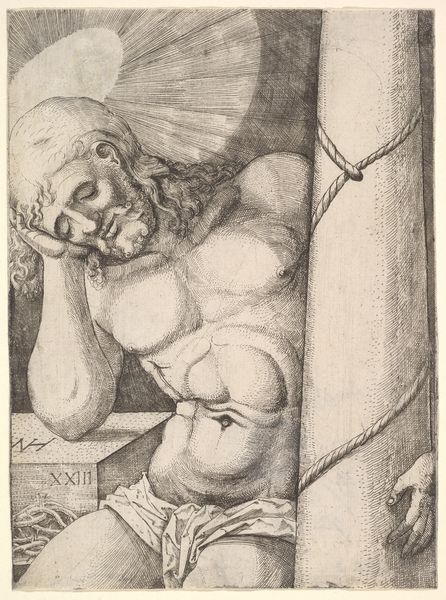
drawing, coloured-pencil, pencil
#
portrait
#
drawing
#
coloured-pencil
#
baroque
#
pencil sketch
#
charcoal drawing
#
figuration
#
pencil drawing
#
pencil
#
history-painting
#
nude
Copyright: Rijks Museum: Open Domain
This is a drawing of a crowned nude woman, possibly Juno, by Hendrick van Beaumont. Notice how the figure is oriented diagonally across the page, creating a dynamic yet precarious balance. Rendered in red chalk, her skin contrasts with the drapery sketched in black chalk, drawing our attention to the play of light and shadow across her form. The crown suggests divinity, potentially destabilizing conventional representations of power through its pairing with nudity. Semiotically, the nudity may signify vulnerability or truth, challenging fixed interpretations of classical iconography. Consider how the artist uses line and shading to model the figure. Does it adhere to academic ideals, or does it diverge in ways that question established aesthetic values? Ultimately, the artwork invites us to consider not just the aesthetic qualities but also the cultural codes and philosophical ideas that informed its creation. Art, after all, is never static; it’s a dialogue between the artist, the artwork, and us.
Comments
No comments
Be the first to comment and join the conversation on the ultimate creative platform.
